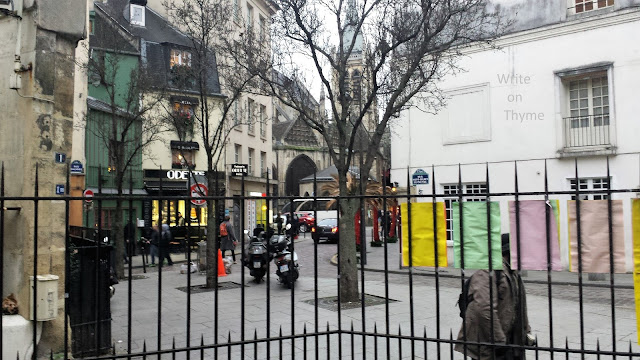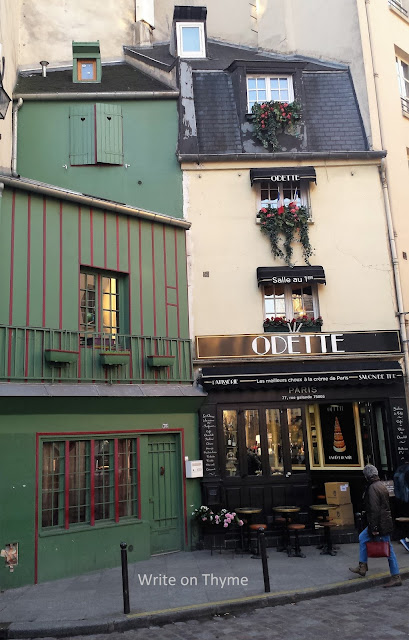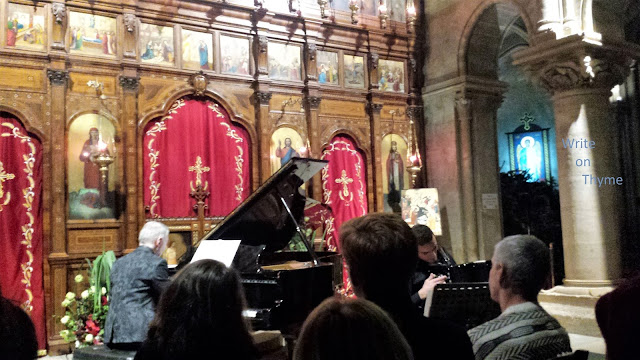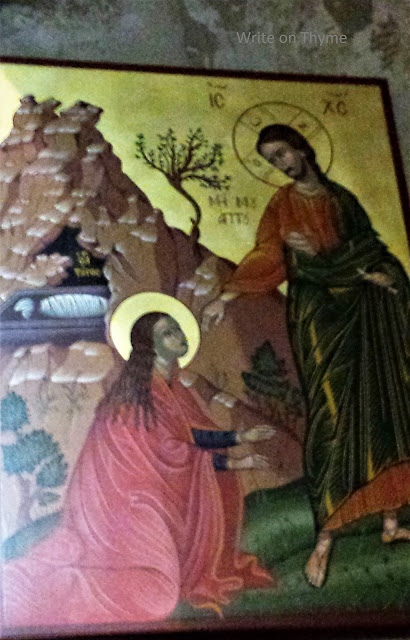Just near Notre Dame...
After crossing the river...

You come to the Square René-Viviani,
the perfect place for an unobstructed view of the grand Notre Dame,
and which also houses The Oldest Planted Tree in Paris
(which you can see Here along with its story.)
This square sits just outside the St. Julien le Pauvre church
and is named after France's first Minister of Labour.
Its location was once the site of ancient burial grounds
and for a time, served as an annex to the Hotel Dieu,
Paris' oldest hospital originally founded in 651.
As mentioned in my last post on St. Julien le Pauvre,
the second oldest church in Paris,
it became the home for the Greek Melchite Catholic Community in 1889.
The inscription below from the Third French Republic
tells of its history.

There's something about being down here in the
heart of the earliest settlement of Paris that makes me feel
like I've finally arrived.
I can spend days in my own neighborhood
or wandering other arrondissements
but it isn't until I get down here
to the very oldest part of Paris
that I let out a sigh and think,
"Ah... now I'm finally here!"
This shot is just outside the church and includes a view
of the church of St. Severin.
And these two beauties are a couple of my favorites in all of Paris.
I think I photograph them each time I come down here.
(Odette is a special patisserie shop
offering sweets in the style the owner's grandmother used to make.
It sells Petites Choux, or "little cabbages"
in the flavors of chocolate, caramel, pistache, café, fruits des bois,
thé vert, praline, citron and vanille.)
And just across Rue St. Julien le Pauvre
sits this little traditional French restaurant
that looked too sweet not to photograph.
According to a History of St. Julien le Pauvre,
the original basilica,
known as St. Julien the Martyr
(named for a soldier martyred in the Auvergne area in the 3rd century)
was destroyed by Normans sometime before the 9th century.
In the 12th century,
it was ceded to the Abbey of Longpont
who, with his group of monks,
rebuilt in Gothic style.
It was also close to the University of Paris
and was used as a lecture hall.
It's even said that Danté attended lectures and prayed at St. Julien
and mentions one of the surrounding streets in his Paradiso,
The cage outside the church doors,
all dressed up for Christmas,
holds a stone well once housed inside the church.
In Medieval times, the church was known
for the magical, healing properties of its well
which the monks charged pilgrims to visit.
In front of the well sits a paving stone from the ancient Roman road.

In the 12th century,
when Peter Abelard fell out with Notre Dame,
he moved across the river and set up open air classes with his students in the area.
If you're in need of your own literary pilgrimage
after wandering through the churches
or along the tiny streets,
just around the corner is the famous Shakespeare and Co.
now even with its own little café on the corner.
now even with its own little café on the corner.
Next time we'll visit the interior of St. Severin
with it's gorgeous twisting column.
And in the meantime,
we're only a month from spring now.
The crocus have already arrived in my yard
and the daffodils are next, pushing up and out.
It won't be long.
Enjoy, and bid farewell,
to the end of winter.
(Photos copyright: Kirsten Steen)
























